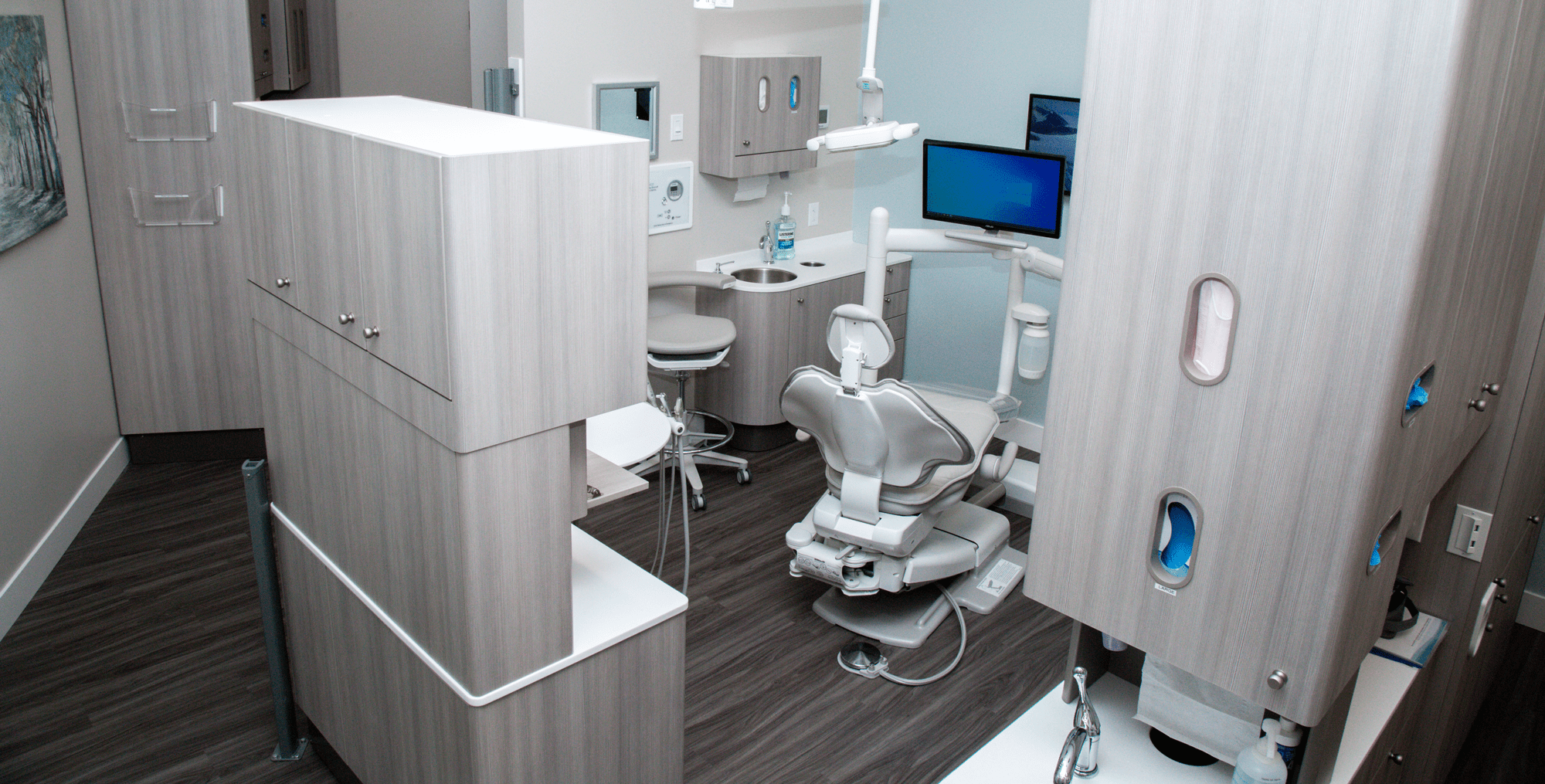
Our West Kelowna dental practice is a Certified Deep Sedation Facility, providing a variety of dental sedation options for adults and children.

What is a Certified Deep Sedation Facility?
Dr. Dahlman is dedicated to providing the highest quality of anesthesia services to our patients. Our facility is a registered non-hospital facility providing anesthesia services and is approved by the College of Dental Surgeons of BC.
Our clinic undergoes regular inspections and exceeds the requirements of the College of Dental Surgeons of BC for the provision of deep sedation in a non-hospital facility. Dr. Dahlman is fully certified in BLS/CPR, advanced cardiac life support (ACLS), and pediatric advanced life support (PALS).
Types of Dental Sedation
Dr. Dahlman frequently performs oral and maxillofacial surgeries under the following types of dental sedation.
Inhaled Sedation (Nitrous Oxide)
A local anesthetic for pain prevention and Inhaled Nitrous oxide (also known as laughing gas), are typically administered together.
Laughing gas allows a patient to remain awake, able to communicate, and helps time to pass more quickly. It increases the pain threshold and lessens anxiety for a better dental experience.
Oral Sedation
In oral sedation the patient takes pills or liquid orally. The medication allows patients to relax and become drowsy. Although the patient may fall asleep, they can be woken and respond purposefully. Usually, patients also receive an injection of local anesthetic as well.
Intravenous (IV) Sedation
IV Sedation is administered directly into the blood-stream for the deepest level of sedation without general anesthesia. A local anesthetic may also be administered. If you choose oral or IV sedation, a responsible adult must accompany you to and from the visit.
You will begin to feel drowsy and relaxed after the medication is administered. Your vital signs will be monitored by our dental team throughout the procedure. You will fall asleep and can breathe on your own, however, you will not remember the procedure afterward.
After the dental procedure is complete, you will recover from the sedation effects before leaving the office with a trusted companion.
You can resume normal activities about 12-24 hours later, but you should have someone stay with you for the first few hours after you have woken from sedation.
Levels of Sedation
The right oral sedation option will be recommended for your unique case.
Mild Sedation
Mild sedation dentistry helps you to feel at ease during your dental appointment. Freezing is used to eliminate pain associated with the procedure. You will remain awake and experience a comfortable and stress-free dental appointment.
Moderate Sedation
Moderate sedation is ideal for those who experience a higher level of anxiety. You are awake but feel drowsy and will have little to no memory of your procedure. Combined with a local anesthetic, moderate sedation makes for a pleasant dental appointment.
Deep Sedation
Deep sedation helps you to sleep through the entire dental procedure. It is used in conjunction with a local anesthetic so you feel no pain and have no memory of the procedure. Many of our patients come to us specifically for sleep dental treatments.
